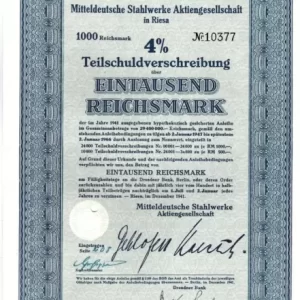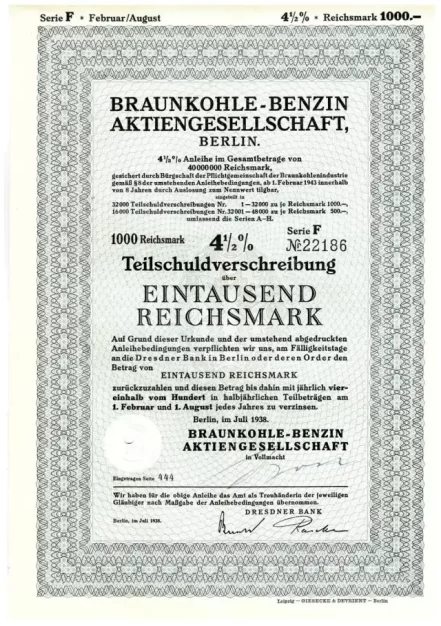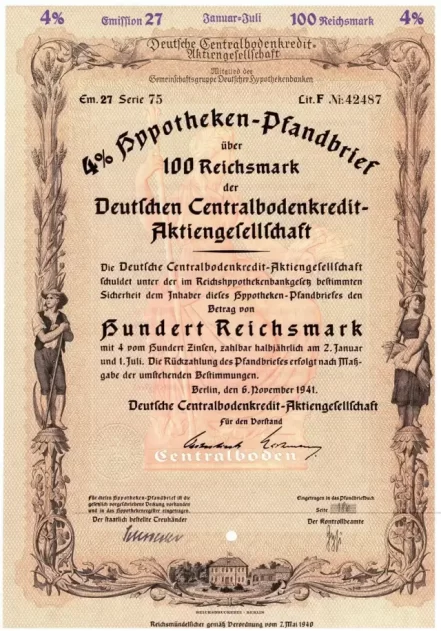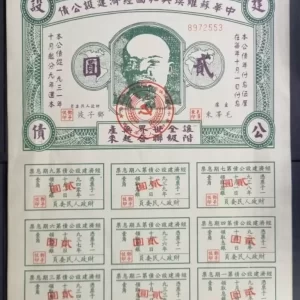Germany bonds year 1926 12,5 Reichsmark
The Germany bond for 12.5 Reichsmark from 1926 is an item that primarily holds collector value today, rather than inherent financial value.
Here is a breakdown of the key points:
- Financial Value (Redemption): Bonds issued by the German Reich (the government of Germany from 1871 to 1945), particularly those in Reichsmark from the post-hyperinflation period (1924-1945), were generally settled or rendered invalid by subsequent German laws and currency reforms after World War II. For most bonds from this era, any financial claim or right to redemption expired decades ago.
- Collector Value (Scripophily): The value of the physical bond lies in its appeal to collectors of financial documents, a hobby known as scripophily. The price is determined by factors such as:
- Condition: Better-preserved bonds (less worn, no tears, no major folds) fetch higher prices.
- Rarity: While 12.5 Reichsmark is an unusual denomination, the overall rarity of that specific issue plays a role.
- Visual Appeal: The design, signatures, and stamps can affect its desirability.
- Coupons: Whether or not the bond still has its attached interest coupons can sometimes affect the price.








